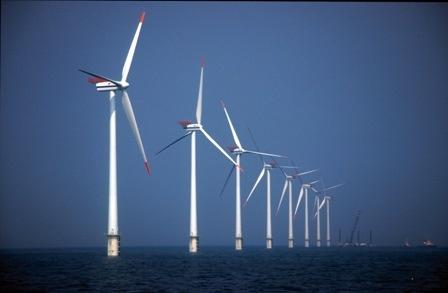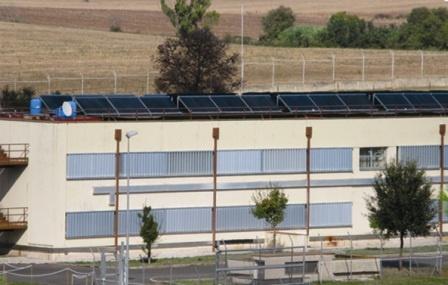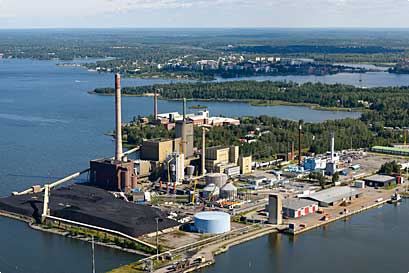Introduction
In March 2012 a historic new Energy Agreement was reached in Denmark. The Agreement contains a wide range of ambitious initiatives, bringing Denmark a good step closer to the target of 100% renewable energy in the energy and transport sectors by 2050.
Denmark has started the green transition almost 40 years ago. Denmark has a long tradition of active energy policy, initiated by the first oil crisis in 1973. Over the years, numerous actions have been taken on the basis of a broad consensus in the Danish Parliament - both in order to reduce the energy consumption and in order to increase the share of renewable energy.
The results have been significant and convincing: the Danish experience shows that through persistent and active energy policy focused on enhanced energy efficiency and ambitious deployment of renewables, it is possible to sustain high economic growth and at the same time reduce fossil-fuel dependency and protect the climate and the environment. Since 1980, the Danish economy has grown by around 80% while energy consumption has remained more or less constant and CO2 emissions have been reduced. In terms of production, Denmark is one of the most efficient users of energy compared with the other EU Member States and OECD countries.
However the new Energy Agreement moves us up a gear, with huge investments up to 2020 in energy efficiency, renewable energy and the energy system. Results in 2020 include approximately 50% of electricity consumption supplied by wind power, and more than 35% of final energy consumption supplied from renewable energy sources.
No energy agreement has ever been reached by a larger and broader majority in the Danish Parliament than this one; and no Danish energy agreement has previously covered such a long time horizon. In other words, a solid framework has been provided for the huge private and public investment to be made in the years to come.
The long-term goal for Danish energy policy is clear: the entire energy supply – electricity, heating, industry and transport – is to be covered by renewable energy by 2050.
Only by improving energy efficiency, electrifying our energy consumption and expanding supply from renewables will it be possible to phase out fossil fuels completely. The initiatives in Denmark’s Energy Agreement for the period 2012-2020 cover these crucial areas.
These are the headline results for 2020:
- more than 35% renewable energy in final energy consumption
- approximately 50% of electricity consumption to be supplied by wind power
- more than 7% reduction in gross energy consumption in relation to 2010
- 34% reduction in greenhouse gas emissions in2020 in relation to 1990, bringing us a good deal closer to the ambitious climate target of the Danish Government: to reduce our greenhouse gas emissions in 2020 by 40% compared to 1990.
Consequently, in 2020 the Danish enterprises and households will be significantly less dependent on scarce and expensive fossil fuels.
A more energy efficient Denmark
A crucial element in the transition to 100% renewable energy will be that Denmark uses less energy by switching to more energy efficient technologies. Otherwise, economic growth will push up energy consumption and make it disproportionally expensive to expand the share of renewables in the energy supply. Moreover, investment in more energy efficient technology will often quickly pay itself back.
It is especially important to invest in retrofitting buildings. Extensive retrofitting is only carried out a few times in the life span of a building.
Initiatives to make energy consumption more efficient:
- large increase in energy savings realised by energy companies. Energy companies are obliged to realise energy savings in enterprises and households by offering subsidies or consultancy, for example. The initiatives will target industry and buildings
- a comprehensive strategy for energy retrofitting of all Danish buildings will be presented in 2013.
Wind power and new energy technologies
Denmark has sufficient renewable energy resources to satisfy energy consumption in the long term. The Energy Agreement ensures a substantial expansion of wind power in particular, corresponding to the annual electricity consumption of 1½ million households. Consequently, approximately 50% of Danish electricity consumption will be covered by wind power in 2020. In comparison, the share was 2% in 1990 and 28% in 2011.
Initiatives to expand renewable energy production:
- 1000 MW offshore wind turbines in bidding rounds with consumer paid subsidies
- 500 MW offshore wind turbines in coastal areas (also in bidding rounds)
- new planning tools will encourage an increase in net capacity of 500 MW onshore wind power
- in total an increase of 2000 MW in addition to the current capacity of wind turbines of around 4000 MW.
In order to transform the energy system intelligently and cost-effectively, continuous research, development and testing of new technological solutions is needed. Initiatives include:
- 7.8 million € has been committed to funding the development and use of new renewable energy technologies for electricity production (solar, wave power, etc.)
- 4.5 million € has been committed to funding the development and use of new renewable energy technologies in district heating (large heat pumps, geothermal energy, etc.).
The parties behind the Energy Agreement stress that efforts to uphold a high level of research, development and demonstration in green energy technology in areas with commercial and growth potential should be maintained. Investing in new green technologies contributes to building Denmark’s future prosperity.
Renewable energy in industry, buildings and transport
Consumption by industrial processes is also to be converted to renewable energy. Therefore, the Energy Agreement has laid down the following:
- a new green business scheme of 32.5 million € in 2013 and 65 million € per year from 2014 to 2020 will promote the efficient use of renewable energy in enterprises
- 3.9 million € per year from 2013 to 2020 has been committed to maintaining and promoting industrial Combined Heat and Power (CHP) in industry and greenhouses.
The Energy Agreement contains a number of initiatives which will reduce individual heating based on oil and gas in buildings substantially and promote renewable alternatives:
- a halt to installation of oil-fired and gas-fired boilers in new buildings from 2013
- a halt to installation of oil-fired boilers in existing buildings from 2016 in areas with district heating or natural gas
- 5.46 million € has been committed to fund the conversion from oil-fired and gas-fired boilers in existing building to renewable alternatives (solar, heat pumps, etc.)
- a comprehensive analysis of the future alternative use of the gas infrastructure will be presented in 2013.
Today, the Danish transport sector runs almost entirely on fossil fuels. Conversion to renewable energy in transport is a tremendous challenge. In the longer term, electric cars will be important. In the short term, biofuels will play a role. Initiatives to promote the green transition in the transport sector are:
- 9.1 million € to establish more recharging stations for electric cars and to promote the infrastructure for hydrogen cars, etc.
- a strategy for the promotion of energy efficient vehicles
- fuels must contain 10% biofuels in 2020
- 1.95 million € to continue the pilot scheme for electric cars.
As a result of the initiatives in the Energy Agreement, Denmark’s total use of oil, coal and gas will be reduced by approximately 25% in 2020 in relation to 2010.
Bioenergy in Danish energy supply
Biomass is an important replacement for coal. In the long term, biomass will also be a vital element for flexible electricity production and for the transport sector. Initiatives in the Energy Agreement to increase the consumption of biomass include:
- conversion from coal to biomass at large-scale CHP plants will be made more attractive by allowing producers and consumers to make price agreements
- an analysis of the future role of district heating in the energy system will be presented in 2013
- an analysis of the use of bioenergy in Denmark will be presented in 2013. The analysis will focus on the effective and sustainable use of the Danish biomass resources for energy purposes.
An important challenge for Denmark is to ensure the expansion of biogas. Biogas is useful in the energy system, and the technology reduces environmental problems. The ambitious plan for biogas expansion is underpinned by a number of initiatives in the Energy Agreement including increased subsidies. A task force has been established with the aim of studying and supporting specific biogas projects. If the required number of new biogas projects is not realised in 2012 and 2013, the parties behind the Energy Agreement will discuss further options, e.g. a proposal for a duty to purchase biogas in order to secure expansion.
“Smart grids”
Due to the increasing share of wind power in the Danish energy system, electricity will be a main energy carrier in the future. However wind power is volatile and energy storage is still expensive. Consequently, initiatives in the Energy Agreement point towards transforming and future-proofing the energy system:
- a strategy for smart grids in Denmark will be presented in 2013
- Agreements will be established with grid companies on the installation of intelligent, remotely readable hourly electricity meters
- new electricity transmission lines between Denmark and Germany
- a comprehensive analysis of the continued functionality of the grid with an increased share of wind power in the system will be presented in 2013
- a thorough analysis of the regulation of the Danish electricity supply sector will be carried out to ensure incentives for green conversion, cost effectiveness, competition and consumer protection
Financing the initiatives in the Energy Agreement
The Energy Agreement requires financing. The total financing requirement amounts to 0.45 million € in 2020. The initiatives are to be fully financed. The Agreement thus stipulates the following:
- energy saving initiatives by energy companies will be financed via the companies’ tariffs and thus through consumers’ energy bills
- the expansion of renewables in electricity production such as offshore and onshore wind turbines will be financed through the Public Service Obligation schemes (PSO) which are a supplement to the price of electricity paid by all electricity consumers. In addition, there is a new gas PSO scheme, collected through the gas bills, which finances subsidies for renewable energy for the gas grid
- as the consumption of fossil fuels drops, state revenues from taxes on coal, oil and gas will also drop correspondingly. Therefore, a new “security of supply tax” will be introduced on all fuels – biomass and fossil – for space heating. This new tax will also finance some of the subsidies for renewable energy which cannot be financed via the PSO schemes.
These expenditures are seen as investments in the future. Apart from the improvements in global climate impacts, the reduced use of fossil fuels in final energy consumption in 2020 have been estimated to amount to more than 0.78 million € per year.



Claus Andersen - Senior advisor, Danish Energy Agency

